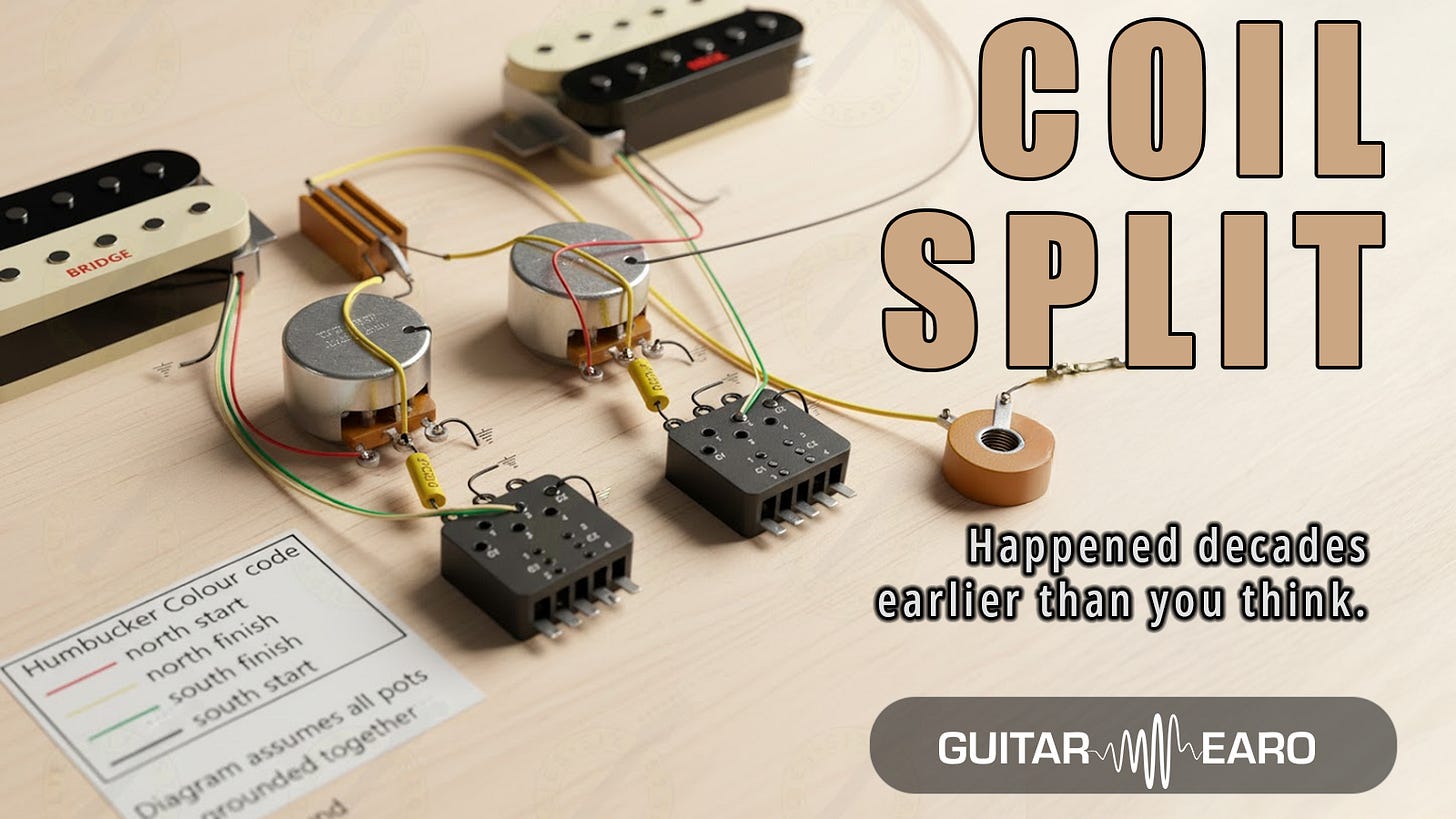The Problem: Hum, Stage, and Clarity
In the mid‑1950s, single‑coil guitar <a href="high-vs-low-the-eternal-pickup-output.html">pickups</a> ruled but the 60 Hz hum they picked up transformed live stages into noise zones. Both Gibson and Gretsch wanted silence without sacrificing the purity of tone.
Seth Lover and the Birth of the P.A.F.
Who? Seth Lover, Gibson design engineer (filed June 22 1955, patent granted July 28 1959) .
What he did: He wound two coils in series, with reverse polarity and phase, cancelling hum via common‑mode rejection and retaining signal strength .
The signature: Small variations in winding and magnet grade (Alnico 2, 3, 5) gave each P.A.F. a unique flavor, warm lows, clear mids, crisp highs .
Ray Butts and the Filter’Tron Counterpart
Who? Ray Butts, amplifier tinkerer for Chet Atkins (patent filed Jan 22 1957; granted June 30 1959) .
Why it matters: Chet Atkins complained about hum on his Gretsch 6120, so Butts devised a similar hum‑canceling dual‑coil pickup design on his own in 1954, before pitching it to Gretsch .
Design differences: Smaller nylon bobbins, longer pole screws, thicker Alnico 5 bar magnets, these created a tighter magnetic field. Result: low‑output, bright “twang‑sparkle” with focused string definition .
A Divided Legacy
This parallel development explains why decades of tone nerds still argue: Who came first? The truth is simpler, and more fascinating, both arrived separately, solving the hum crisis with voices that still echo today .
Why it Still Matters
Because tone isn’t just about silencing hum, it’s about how noise touches your strings and colours your notes. P.A.F.s gave us <a href="do-heavier-guitars-actually-sustain.html">sustain</a> and warmth; Filter’Trons gave us clarity and chime. Your choice still echoes Seth Lover’s versus Ray Butts’ paths.
One noise problem, solved twice. The result? Two tonal revolutions that keep us choosing and arguing still.
Takeaway: Next time you dial in your humbucker tone, remember. It’s not just about cancelling interference; it’s a tonal legacy born of parallel genius.




